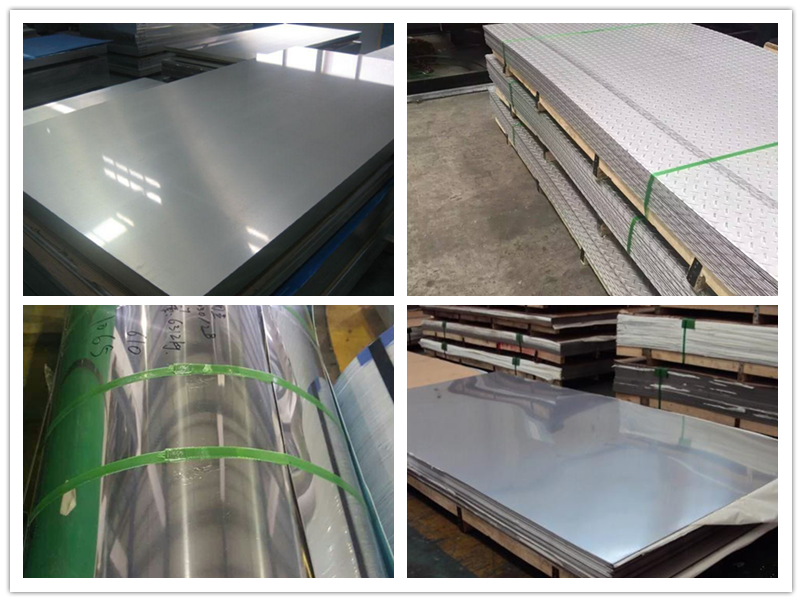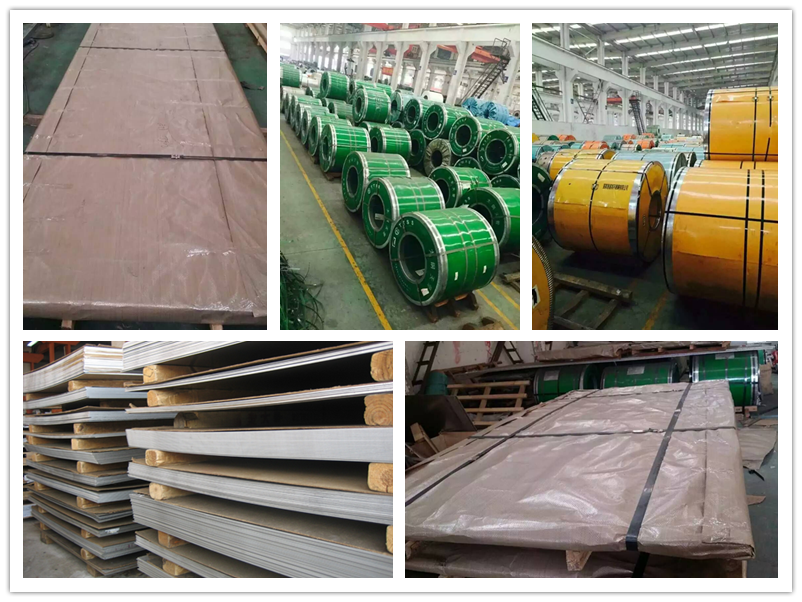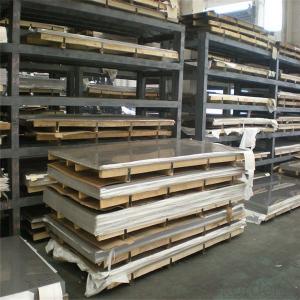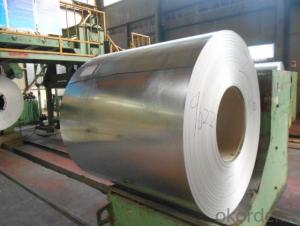201 Stainless Steel Sheet 2mm hot rolled
- Loading Port:
- Shanghai
- Payment Terms:
- TT OR LC
- Min Order Qty:
- 2 m.t.
- Supply Capability:
- 2000 m.t./month
OKorder Service Pledge
OKorder Financial Service
You Might Also Like
Item specifice
201 hot rolled stainless steel sheet 2mm
NAME | |
typ | Cold rolled;hot rolled |
thickness | 0.3-3mm;3mm-100mm |
Cold size | 1000mm*2000mm,1220mm*2440mm |
Hot size | 1500mm*6000mm |
Cold surface | 2B,BA,HL,8K,No.4,No.8 |
Hot surface | No.1 |
Material/Grade | 201,202,304,304L,321,316L,310S,317,4049L, etc. |
Standard | ASTMA240,ASTMA480,GB/T4237-1992,JIS |
Application | Auto or aircraft or construction industry,tableware,furniture , decoration for chemical equipment ,Industry purposes and building ornament, production manufacturing |
Place of Origin | Tianjin, China (Mainland) |
Brand Name | Tisco,Jisco,Baosteel,Lisco |
Technique | cold rolled ,hot rolled |
Certificate | ISO 9001:2008 |
Payment terms | T/T(recommended), L/c,western |
Leading time/Delivery Detail | Within 7-15 days after receipt of T/T or L/c at sight |
Packaging Detail | 1.with wooden pallets, or film covered, in the containers. 2.Export standard package or as the customers' demands. 3.seaworthy wooden cases, 4.with or without edge protector,steel hoop and seals, 5.export -ted standard package or as customers signal requirement |
Stock | Aways in stock |
Payment | 30% TT in advance, balance against copy B/L |
MOQ: | 1 TON |
Note
| We can produce other standard as the customers’ requirement
|
Producitivity | 10000Tons/Month |
1.We can supply you with reasonable and competitive price and good quality products. 2.If you are interested in any of products, please contact us for more information.
| |

Packaging & Shipping

Application

- Q:What is the bending strength of stainless steel sheets?
- The bending strength of stainless steel sheets can vary depending on the specific grade and thickness of the sheet. However, stainless steel is generally known for its high strength and rigidity, making it suitable for various applications that require strong and durable materials.
- Q:What is the difference between stainless steel sheets and regular steel sheets?
- Stainless steel sheets and regular steel sheets differ primarily in their composition and properties. Stainless steel sheets are made primarily of iron and contain a minimum of 10.5% chromium, which gives them their unique stainless properties. Regular steel sheets, on the other hand, are made primarily of iron and carbon, with no significant amount of chromium. The presence of chromium in stainless steel sheets provides several distinct advantages. Firstly, it enhances the corrosion resistance of the material, making it highly resistant to rust and staining. This makes stainless steel sheets suitable for applications in environments where moisture or exposure to corrosive substances is a concern, such as in the food and beverage industry or marine applications. Additionally, stainless steel sheets have excellent heat resistance, making them suitable for high-temperature applications. They can withstand extreme temperatures without losing their structural integrity, which regular steel sheets may not be able to tolerate. Another key difference lies in the appearance of the two materials. Stainless steel sheets have a bright, reflective surface due to their chromium content, giving them a lustrous and modern look. Regular steel sheets, on the other hand, have a duller and less polished appearance. Furthermore, stainless steel sheets are often more expensive than regular steel sheets due to the additional manufacturing processes and the higher cost of the chromium alloy. However, the enhanced corrosion resistance and durability provided by stainless steel sheets can often justify the higher cost in various applications. In summary, stainless steel sheets differ from regular steel sheets in terms of their composition, properties, appearance, and cost. Stainless steel sheets offer superior corrosion resistance, heat resistance, and a visually appealing surface, making them ideal for specific applications where these attributes are required. Regular steel sheets, on the other hand, are more affordable but lack the unique properties of stainless steel.
- Q:What are the different surface textures available for stainless steel sheets?
- Stainless steel sheets come in a variety of surface textures to meet different aesthetic and functional requirements. Some of the common surface textures available for stainless steel sheets are: 1. No. 1 Finish: This is the most common surface texture, also known as mill finish. It has a smooth, reflective surface that is obtained by hot rolling the stainless steel sheet. 2. No. 2B Finish: This surface texture is achieved through a process called cold rolling and annealing. It has a slightly matte appearance with a smooth, non-reflective finish. 3. No. 4 Finish: Also known as brushed or satin finish, this surface texture is obtained by mechanically polishing the stainless steel sheet. It has a brushed appearance with fine parallel lines, providing a textured and decorative finish. 4. No. 8 Finish: This surface texture, also referred to as mirror or reflective finish, is achieved by polishing the stainless steel sheet to a high shine. It has a glossy, mirror-like appearance that reflects light and adds a luxurious touch to applications. 5. Embossed Finish: This surface texture involves impressing a pattern or design onto the stainless steel sheet. It can range from simple textures like diamond or linen patterns to more intricate designs, providing both visual interest and improved grip for certain applications. 6. Bead Blast Finish: This surface texture is created by blasting the stainless steel sheet with fine glass beads or other abrasives. It produces a uniform, matte finish with a slightly roughened texture, suitable for applications where a subdued appearance is desired. 7. Etched Finish: This surface texture involves chemically etching the stainless steel sheet to create patterns or designs. It can produce intricate and detailed textures, offering a unique and artistic finish. These are just a few examples of the different surface textures available for stainless steel sheets. Each texture has its own distinct characteristics, allowing for a range of design possibilities in various industries such as architecture, interior design, automotive, and more.
- Q:How is stainless steel different from other types of steel?
- Stainless steel is a type of steel that is different from other types of steel primarily due to its composition and unique properties. It contains a minimum of 10.5% chromium, which forms a thin and invisible layer of chromium oxide on the surface of the steel. This layer is highly resistant to corrosion, making stainless steel highly durable and long-lasting. Unlike other types of steel, stainless steel does not easily rust, stain, or corrode when exposed to moisture, air, or chemicals. This corrosion resistance makes it suitable for various applications where exposure to harsh environments is expected, such as in kitchen appliances, cutlery, medical equipment, and construction materials. Furthermore, stainless steel has excellent strength and durability, making it ideal for applications that require high structural integrity. It is also heat-resistant, maintaining its strength and shape even at elevated temperatures. This property makes stainless steel widely used in industries like automotive, aerospace, and construction. Moreover, stainless steel is highly hygienic due to its non-porous surface and resistance to bacterial growth. It is easy to clean and maintain, making it a popular choice for food processing equipment, medical instruments, and sanitary applications. In summary, stainless steel stands out from other types of steel due to its corrosion resistance, strength, heat resistance, and hygienic properties. These qualities make it a versatile material used in various industries and applications, where durability, longevity, and resistance to external factors are crucial.
- Q:What are the different types of stainless steel sheet surface patterns available?
- There is a wide range of surface patterns available for stainless steel sheets, each possessing its own distinct qualities and aesthetic charm. Some of the most frequently encountered patterns are as follows: 1. Brushed: This texture is obtained by gently brushing the stainless steel surface with an abrasive material, resulting in a smooth and uniform appearance. It is commonly employed in scenarios where a sleek and contemporary appearance is desired. 2. Mirror: This pattern entails polishing the stainless steel surface to achieve a highly reflective finish, akin to that of a mirror. It is often utilized in decorative applications where a high degree of shine is sought after. 3. Satin: Also referred to as a brushed or hairline finish, this pattern is achieved by uniformly applying a fine abrasive substance to the stainless steel surface in a linear motion, resulting in a matte effect. It is commonly employed in architectural and kitchen applications. 4. Embossed: This pattern involves imprinting a design or texture onto the stainless steel surface using a patterned roller or press. It can produce a variety of decorative effects, such as raised or recessed patterns, and is frequently utilized in interior design and automotive applications. 5. Perforated: In this pattern, the stainless steel sheet is punctured with a series of small holes arranged in a regular pattern. This allows for improved ventilation and drainage capabilities and is commonly employed in architectural and industrial applications. 6. Etched: This pattern involves chemically treating the stainless steel surface to create a design or pattern. It can be used to produce intricate and detailed designs, making it popular in decorative and artistic applications. These examples merely scratch the surface of the diverse range of surface patterns available for stainless steel sheets. The choice of pattern often depends on the desired application, functionality, and visual appeal.
- Q:How do you remove rust from stainless steel sheets?
- To remove rust from stainless steel sheets, there are a few effective methods you can try. Here are a few options: 1. Vinegar: Vinegar is an excellent natural cleaner that can remove rust from stainless steel. Soak a cloth or sponge in white vinegar and rub it onto the rusted areas. Let it sit for a few minutes, then scrub the rust away with a soft-bristle brush. Rinse the sheet with water and dry it thoroughly. 2. Lemon juice and baking soda: Create a paste by mixing lemon juice and baking soda together. Apply the paste to the rusted areas and let it sit for about 10-15 minutes. Scrub the rust away with a soft cloth or sponge, rinse the sheet, and dry it completely. 3. Commercial rust remover: If the rust is stubborn or extensive, you can use a commercial rust remover specifically designed for stainless steel. Follow the instructions on the product and wear protective gloves as some rust removers can be harsh. After applying the rust remover, rinse the sheet thoroughly and dry it well. 4. Sanding or wire brushing: For more severe rust, you can use sandpaper or a wire brush to remove the rust manually. Start with a coarser grit sandpaper or brush and gradually move to a finer grit until the rust is completely removed. Be sure to sand or brush in the direction of the grain to avoid scratching the stainless steel surface. Afterward, clean the sheet with a mild detergent, rinse, and dry thoroughly. Remember to always test any cleaning method or product on a small, inconspicuous area of the stainless steel sheet first to ensure it doesn't cause any damage. Additionally, regular maintenance and proper storage can help prevent future rust formation on stainless steel sheets.
- Q:Can stainless steel sheets be used for kitchen appliances?
- Yes, stainless steel sheets can be used for kitchen appliances. Stainless steel is a popular material choice for kitchen appliances due to its durability, resistance to corrosion, and easy maintenance. It is commonly used for making ovens, refrigerators, dishwashers, and other kitchen appliances. Stainless steel sheets are versatile and can be easily formed into various shapes and sizes to fit different appliance designs. Additionally, stainless steel has a sleek and modern appearance, making it a preferred choice for many homeowners and chefs.
- Q:Can stainless steel sheets be used for architectural purposes?
- Yes, stainless steel sheets can be used for architectural purposes. Stainless steel is a versatile material that is highly resistant to corrosion, making it ideal for outdoor applications. It is widely used in architectural projects such as building facades, roofs, cladding, and decorative elements. Stainless steel sheets offer several advantages for architectural purposes. First, they have a modern and sleek appearance that can enhance the aesthetics of a building. They come in various finishes, including brushed, mirrored, and textured, allowing for creative design possibilities. Additionally, stainless steel sheets are durable and long-lasting. They can withstand harsh weather conditions, UV radiation, and pollution, ensuring the longevity of the architectural elements. Stainless steel is also easy to maintain, requiring minimal cleaning and upkeep. Moreover, stainless steel is a sustainable choice for architectural purposes. It is 100% recyclable, making it an environmentally friendly option. Stainless steel sheets can be recycled and reused without losing their properties, reducing the environmental impact of architectural projects. In summary, stainless steel sheets are a suitable choice for architectural purposes due to their corrosion resistance, aesthetic appeal, durability, and sustainability. They offer a wide range of design options and can withstand the elements, making them a reliable choice for both indoor and outdoor architectural applications.
- Q:Are stainless steel sheets resistant to nitric acid?
- Stainless steel sheets are typically known for their resistance to nitric acid. Nitric acid, an extremely powerful oxidizing agent, has the ability to corrode and dissolve numerous metals. However, stainless steel contains a significant amount of chromium, which creates a protective oxide layer on the material's surface. This oxide layer acts as a barrier, effectively preventing direct contact between the nitric acid and stainless steel, thereby providing corrosion resistance. It is crucial to acknowledge that the level of resistance may differ depending on various factors such as the grade and composition of the stainless steel, as well as the nitric acid's concentration and temperature.
- Q:Are stainless steel sheets suitable for automotive body panels?
- Yes, stainless steel sheets are suitable for automotive body panels. Stainless steel is known for its corrosion resistance, durability, and strength, making it an ideal material for automotive applications. It can withstand harsh weather conditions, resist rust and corrosion, and provide a sleek and polished appearance to the vehicle. Additionally, stainless steel sheets offer excellent formability, allowing for intricate designs and shapes required for automotive body panels.
1. Manufacturer Overview |
|
|---|---|
| Location | |
| Year Established | |
| Annual Output Value | |
| Main Markets | |
| Company Certifications | |
2. Manufacturer Certificates |
|
|---|---|
| a) Certification Name | |
| Range | |
| Reference | |
| Validity Period | |
3. Manufacturer Capability |
|
|---|---|
| a)Trade Capacity | |
| Nearest Port | |
| Export Percentage | |
| No.of Employees in Trade Department | |
| Language Spoken: | |
| b)Factory Information | |
| Factory Size: | |
| No. of Production Lines | |
| Contract Manufacturing | |
| Product Price Range | |
Send your message to us
201 Stainless Steel Sheet 2mm hot rolled
- Loading Port:
- Shanghai
- Payment Terms:
- TT OR LC
- Min Order Qty:
- 2 m.t.
- Supply Capability:
- 2000 m.t./month
OKorder Service Pledge
OKorder Financial Service
Similar products
New products
Hot products
Related keywords






























